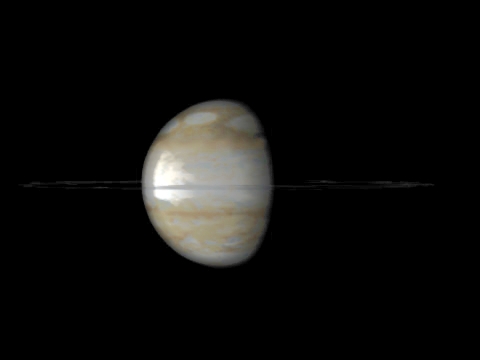


Last update: 08 April 1997
(April 8, 2101 - Lunar Farside Deep Space Net): Images from the Hieronymo system continue to come in from the missions. This enhanced image from the NESSIE spacecraft show clear evidence of a narrow ring system.

(April 7, 2101 - Lunar Farside Deep Space Net): During its survey of the inner moons of Hieronymo, the DEHAS orbits imaged the tortured face of Jellicle, the largest satellite of the giant planet, and one of the innermost.
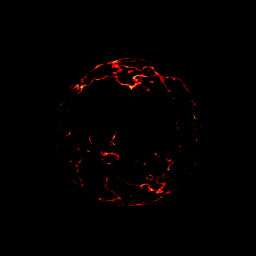
(April 5, 2101 - Lunar Farside Deep Space Net): This portrait of Hieronymo and its 4th satellite were taken by the color HRI camera onboard the HASIS orbiter.
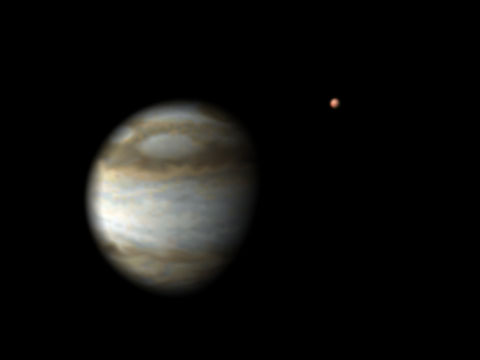
(April 4, 2101 - Lunar Farside Deep Space Net): On its tour of the satellites of the Hieronymo system, the JM-I mission made a close approach to the second moon, Jennyanydots.
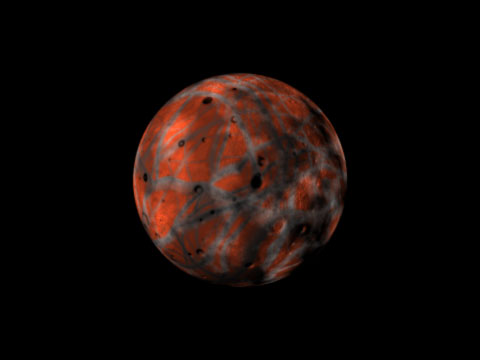
(February 13, 2101 - Lunar Farside Deep Space Net): The POFEP lander captured this image of the landing site in the southern hemisphere of Phlebas. The soil sampler found no evidence of organic compounds at this site. Analysis of other lander data is expected shortly.

(December 13, 2100 - Lunar Farside Deep Space Net): No good images of Eugenides are available, due to the fact that the two missions to Eugenides carried no imaging instruments. The only extant picture of Eugenides was taken by the ICE mission during its flyby of Tiresias.
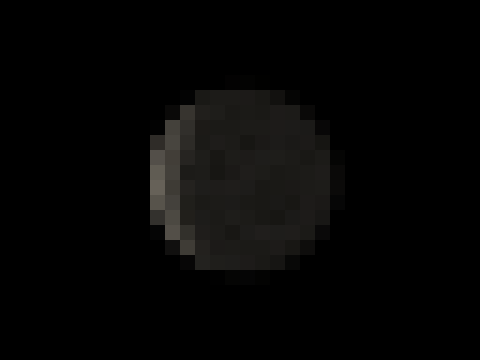
(December 12, 2100 - Lunar Farside Deep Space Net): The PLC1 orbiter encountered Phlebas, sending back this color HRI image of the southern hemisphere. Scientists are working to analyse the data and determine the cloud composition and atmospheric structure.
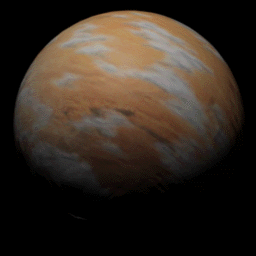
(December 11, 2100 - Lunar Farside Deep Space Net): The HRI on the COPI mission captured the icy Prufrock and its companion Mistoffelees (likely a captured comet).
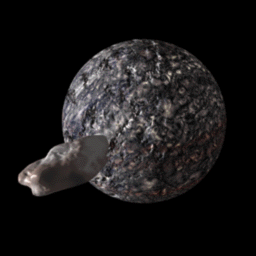
(December 10, 2100 - Lunar Farside Deep Space Net): This mosaic of high-resolution color images of Phlebas and its outer satellite was taken by the SOPCOP spacecraft.
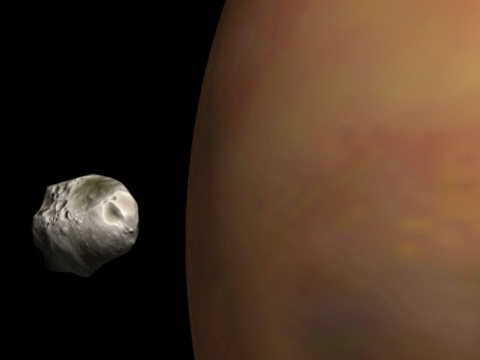
(December 9, 2100 - Lunar Farside Deep Space Net): The TAPE-1 orbiter captured this image with its HRI from 131000 kilometers away from the cloud-covered planet. The large moon, Macavity, is similar in size to our own moon.
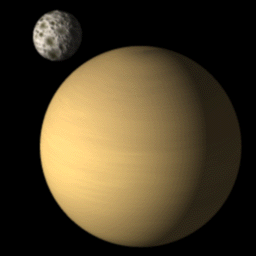
(December 8, 2100 - Lunar Farside Deep Space Net):
Below is an image taken of the gas giant Hieronymo by the LRI onboard the HAMPA mission. Color filters were not used so the image is in greyscale. Hieronymo is more massive than Jupiter, and has a system of at least 12 satellites.
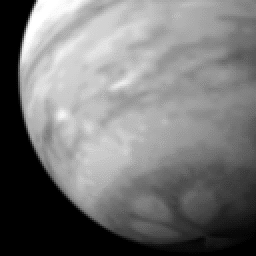
(December 7, 2100 - Lunar Farside Deep Space Net):
Second to arrive at Equitone, close on the heels of CATS, was the ETE (Expedition to Equitone) flyby. This color image was made with the HRI, using color information form the spectrophotometer.
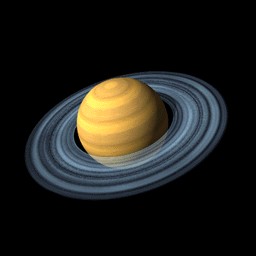
(December 6, 2100 - Lunar Farside Deep Space Net): The first image has been received from the CATS mission in its encounter with Equitone. The Low Resolution Video Imager (LRVI) onboard CATS, which is employed for navigational use, snapped a black and white picture of the ringed giant before making final trajectory adjustments prior to the aerobraking maneauver. There is some trepidation in Mission Control that some damage to the probe may be sustained during ring plane crossing, but optimisim is high as CATS is well shielded against small particle impacts.
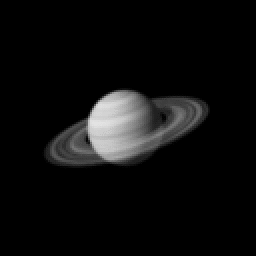
(December 5, 2030 - Chryse Planitia Base): The first of the missions to the Eliot system was successfully launched today. The CATS probe, designed to investigate the Eliot asteroid belt, was started on its 40 year mission to the distants planetary system. Shortly after 0100 Mars Standard Time, the Hephaestus rocket carrying the probe departed from the Deimos spaceyard, where the Eliot probes have been awaiting their respective launches. The rocket proceeded for 16 standard hours under propulsion from the ion boosters, reaching a safe distance from Mars. Then, around 1700 MST, the boosters were ejected and the main fusion engine on the Hephaestus rocket was ignited, starting the spacecraft on its interstellar journey.
The rocket will accelerate for about half of its journey to relativistic speeds, then it will reverse orientation and decelerate for the second half. The rocket is equipped with extensive radiation and ablative shielding to protect the payload from the hazards of travelling at near-lightspeed. After a trip of around 40 years Earth-time the spacecraft will be delivered to the Eliot system. After separation from the rocket, the spacecraft systems will turn on for the first time, and the actual mission will begin.
The remaining Eliot missions will be launced at intervals of weeks for the next year or so. We will keep you posted on the progress of this landmark in human exploration of the cosmos!
smyers@nrao.edu Steven T. Myers